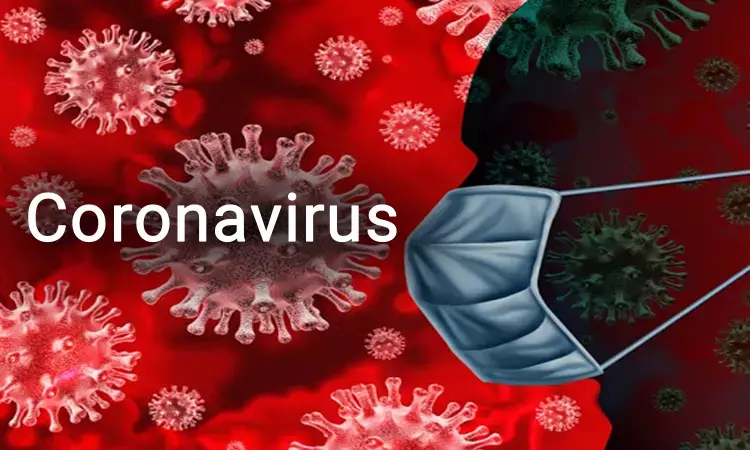- Home
- Medical news & Guidelines
- Anesthesiology
- Cardiology and CTVS
- Critical Care
- Dentistry
- Dermatology
- Diabetes and Endocrinology
- ENT
- Gastroenterology
- Medicine
- Nephrology
- Neurology
- Obstretics-Gynaecology
- Oncology
- Ophthalmology
- Orthopaedics
- Pediatrics-Neonatology
- Psychiatry
- Pulmonology
- Radiology
- Surgery
- Urology
- Laboratory Medicine
- Diet
- Nursing
- Paramedical
- Physiotherapy
- Health news
- Fact Check
- Bone Health Fact Check
- Brain Health Fact Check
- Cancer Related Fact Check
- Child Care Fact Check
- Dental and oral health fact check
- Diabetes and metabolic health fact check
- Diet and Nutrition Fact Check
- Eye and ENT Care Fact Check
- Fitness fact check
- Gut health fact check
- Heart health fact check
- Kidney health fact check
- Medical education fact check
- Men's health fact check
- Respiratory fact check
- Skin and hair care fact check
- Vaccine and Immunization fact check
- Women's health fact check
- AYUSH
- State News
- Andaman and Nicobar Islands
- Andhra Pradesh
- Arunachal Pradesh
- Assam
- Bihar
- Chandigarh
- Chattisgarh
- Dadra and Nagar Haveli
- Daman and Diu
- Delhi
- Goa
- Gujarat
- Haryana
- Himachal Pradesh
- Jammu & Kashmir
- Jharkhand
- Karnataka
- Kerala
- Ladakh
- Lakshadweep
- Madhya Pradesh
- Maharashtra
- Manipur
- Meghalaya
- Mizoram
- Nagaland
- Odisha
- Puducherry
- Punjab
- Rajasthan
- Sikkim
- Tamil Nadu
- Telangana
- Tripura
- Uttar Pradesh
- Uttrakhand
- West Bengal
- Medical Education
- Industry
Study Identifies characteristics of patients with fatal COVID-19 infection

Researchers have identified the most common characteristics of 85 COVID-19 patients who died in Wuhan, China in a new study in early stages of the coronavirus pandemic.
The study reports on commonalities of the largest group of coronavirus patient deaths to be studied to date. The paper has been published online in the American Thoracic Society's American Journal of Respiratory and Critical Care Medicine.
In "Clinical Features of 85 Fatal Cases of COVID-19 From Wuhan: A Retrospective Observational Study," researchers from China and the United States report on an analysis of the electronic health records of patients with COVID-19 who died despite treatment at two hospitals in Wuhan: Hanan Hospital and Wuhan Union Hospital between Jan. 9 and Feb. 15, 2020. Wuhan, in China's Hubei Province, was the epicenter of the COVID-19 outbreak.
"The greatest number of deaths in our cohort were in males over 50 with non-communicable chronic diseases," stated the authors. "We hope that this study conveys the seriousness of COVID-19 and emphasizes the risk groups of males over 50 with chronic comorbid conditions including hypertension (high blood pressure), coronary heart disease and diabetes."
The researchers examined the medical records of 85 patients who had died, and recorded information on their medical histories, exposures to coronavirus, additional chronic diseases they had (comorbidities), symptoms, laboratory findings, CT scan results and clinical management. Statistical analyses were then done.
The median age of these patients was 65.8, and 72.9 percent were men. Their most common symptoms were fever, shortness of breath (dyspnea) and fatigue. Hypertension, diabetes and coronary heart disease were the most common comorbidities. A little over 80 0 percent of patients had very low counts of eosinophils (cells that are reduced in severe respiratory infections) on admission. Complications included respiratory failure, shock, acute respiratory distress syndrome (ARDS) and cardiac arrhythmia, among others. Most patients received antibiotics, antivirals and glucocorticoids (types of steroids). Some were given intravenous immunoglobulin or interferon alpha-2b.
The researchers noted: "The effectiveness of medications such as antivirals or immunosuppressive agents against COVID-19 is not completely known. Perhaps our most significant observation is that while respiratory symptoms may not develop until a week after presentation, once they do there can be a rapid decline, as indicated by the short duration between time of admission and death (6.35 days on average) in our study."
Based on their findings, eosinophilopenia – abnormally low levels of eosinophils in the blood – may indicate a poor prognosis. The scientists also noted that the early onset of shortness of breath may be used as an observational symptom for COVID-19 symptoms. In addition, they noted that a combination of antimicrobial drugs (antivirals, antibiotics) did not significantly help these patients. The majority of patients studied died from multiple organ failure.
"Our study, which investigated patients from Wuhan, China who died in the early phases of this pandemic, identified certain characteristics. As the disease has spread to other regions, the observations from these areas may be the same, or different. Genetics may play a role in the response to the infection, and the course of the pandemic may change as the virus mutates as well. Since this is a new pandemic that is constantly shifting, we think the medical community needs to keep an open mind as more and more studies are conducted."
For more details click on the link: https://doi.org/10.1164/rccm.202003-0543OC
Hina Zahid Joined Medical Dialogue in 2017 with a passion to work as a Reporter. She coordinates with various national and international journals and association and covers all the stories related to Medical guidelines, Medical Journals, rare medical surgeries as well as all the updates in the medical field. Email: editorial@medicaldialogues.in. Contact no. 011-43720751
Dr Kamal Kant Kohli-MBBS, DTCD- a chest specialist with more than 30 years of practice and a flair for writing clinical articles, Dr Kamal Kant Kohli joined Medical Dialogues as a Chief Editor of Medical News. Besides writing articles, as an editor, he proofreads and verifies all the medical content published on Medical Dialogues including those coming from journals, studies,medical conferences,guidelines etc. Email: drkohli@medicaldialogues.in. Contact no. 011-43720751


